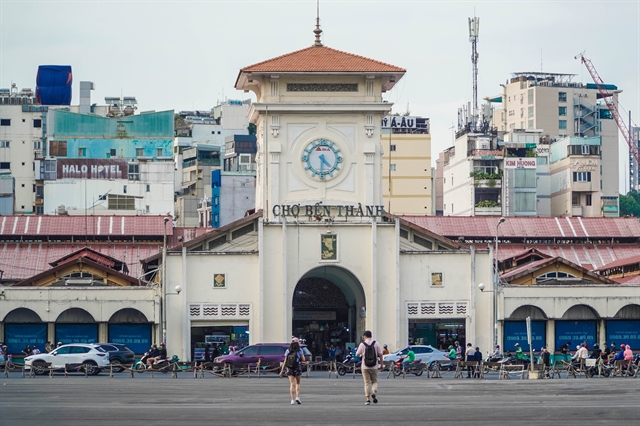 Life & Style
Life & Style


|
| Five HCM City architectural sites were recognised as city level monuments on November 22. Photo VNA/VNS Photo Thu Hương |
HCM CITY – Five architectural sites in HCM City have been recognised as “monuments” by the city Department of Culture and Sports.
They include Bến Thành Market, the Trần Hưng Đạo Temple, the District 1 People’s Committee building, the headquarters of the city customs department, and the grave of a government official who worked for King Tự Đức.
Situated in the middle of District 1, Bến Thành Market is a must-visit for local and foreign tourists.
At over 110 years old it is one of the city’s oldest markets, and has hundreds of vendors selling garments, textiles, souvenirs, foods, and handicrafts.
It has undergone major external restorations over the years.

|
| The list includes Bến Thành Market, a must-visit place for local and foreign tourists. Photo nld.vn |
The Trần Hưng Đạo Temple on bustling Võ Thị Sáu Street (District 1) is over 90 years old and among the most popular worship places for locals.
It is dedicated to Trần Hưng Đạo, real name Trần Quốc Tuấn, a statesman, royal prince and military commander for the Trần Dynasty.
It was under his leadership that Vietnamese armies repelled two of three major Mongol invasions in the late 13th century.
His victories over the Yuan Dynasty under Kublai Khan are considered among the greatest military feats in Vietnamese history.
The District 1 People’s Committee building on Lê Duẩn Street is over 150 years old.
It used to be a place of entertainment for French military leaders.
In 1954 it became the headquarters of the Ministry of Justice, and since 1975 has been the District 1 administrative office.
The city customs department building at the intersection of Hàm Nghi and Tôn Đức Thắng streets was constructed in 1887.
It used to be the customs and tax headquarters of the French colonial administration until 1975 when it became what it is today.
The grave of a government official who served under King Tự Đức of the Nguyễn Dynasty on Trần Văn Đang Street in District 3’s is over 170 years old.
It is built of laterite (a reddish clay soil rich in iron and aluminium) and bricks and has carvings on the outside.
Including these five, the city now has two special national monuments, 58 national ones, and 133 designated by the city.
Trần Thế Thuận, director of the city Department of Culture and Sports, said the recognition should help preserve and restore these sites properly.
He urged related parties to continue with their preservation and suggest promotional plans to promote their heritage to the public. VNS




